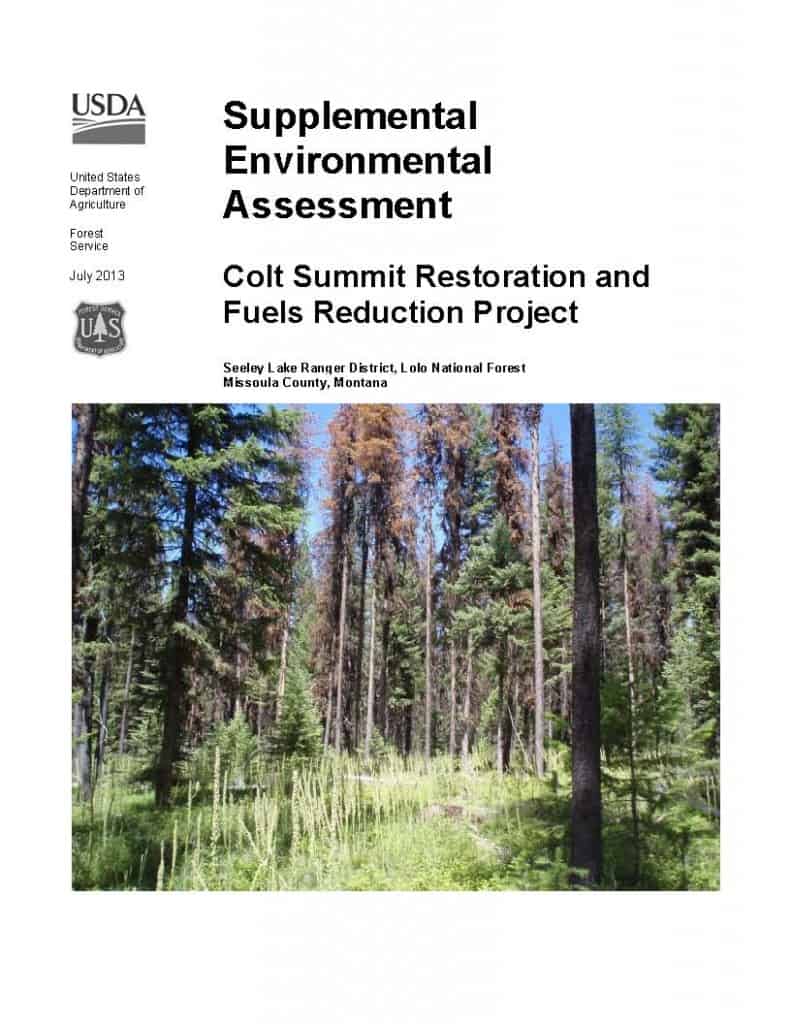One of my goals on this blog has been to try to share some of the “behind the scenes” that goes on with Forest Service projects, so that colleagues in academia and elsewhere can get an idea of what it’s like to be a practitioner in this world.
Here are the note from an appeals resolution meeting for the project we’ve been following, Colt Summit. Remember it was collaboratively developed, and the acres of commercial thinning reduced from 1298 to 597 based on public comment. This resolution call was open to the public.
Also remember that I said there were two pieces of information about “what groups want”. One is “what do you want to change about the analysis?” and the other is “what do you want to change on the ground for this project.”
In this transcript, the FS keeps asking “what do you want?”…and the appellants say “give us something and we’ll see if we like it.” That’s the old “bring me a rock” approach. And why should the FS “bring them a rock”?
Because, in the words of Sarah Jane Johnson “you are asking us to defend our appeal, we are all irritated by that, and we did a lot of work on our appeal, our offer is drop the project and do an EIS, you are supposed to provide a counter offer. ”
Hmm. “you are supposed to make a counteroffer..” is that in law, regulations or policy? Not that I recall.
This meeting resonated with me, as I have been in similar discussions with the same flavor, in fact it have me a flashback or two.
In the interests of being fair, I am posting the whole thing instead of an excerpt. Now it could be argued that the note-taker didn’t adequately capture the comments.. so perhaps all these meetings should be open to the public and videotaped?
May 25, 2011 1:30pm
Appeals Panel Resolution Meeting Conference Call
Notes taken by Allison Kolbe
Participants at Lolo SO: Scott Tomson, Tim Love, Barb Beckes, Tami Paulsen, Shane Hendrickson, Sandy Mack, Debbie Austin, Chris Partyka, Carly Lewis, Boyd Hartwig, Allison Kolbe
Debbie Austin: I will go over our agenda, we are here to resolve appeals for Colt Summit, the three appeals came from Friends of the Wild Swan and Montana Ecosystems Defense Council, Alliance for the Wild Rockies and Native Ecosystem Council and the third from Native Ecosystem Council and Alliance for the Wild Rockies. We also received a Notice of Intent to Sue from the Western Environmental Law Center on behalf of those groups.
This project had broad public involvement including participation by the Lolo Restoration Committee and the Southwest Crown of the Continent group. This project is unique because it is fully funded for implementation and for monitoring implementation and effects monitoring.
Our agenda for this meeting is:
1. Debbie Austin will make introductions, speak to why we are here (to see if we can come to resolution), introduce everyone in the meeting, we will go until 3:30 or 4pm if needed
2. Chris Partyka will go over the appeals process
3. Tim Love will give a Project Overview, including a quick summary of project including the
4. Sandy Mack will explain how we grouped the appeal points into issues
5. What do the appellants want to focus on, and what are their most important concerns?
6. Public on the call can comment
7. Closeout/Next Steps/Wrap‐Up/Resolved Issues
Participants in room introduced themselves: Debbie Austin, Sandy Mack, Shane Hendrickson, Boyd Hartwig, Tami Paulsen, Barb Beckes, Scott Tomson, Allison Kolbe, Carly Lewis, Chris Partyka
Participants on the phone introduced themselves: Arlene Montgomery, Steve Kelley, Michael Garrity, Sara Jane Johnson, Scott Brennan, Megan Birzell, Joe Kirkley, Melissa Hayes, and Julia Altemus.
Chris Partyka: The Administrative Appeals Process is designed to review public comments that question the decision that has been made, and anyone who submitted comments can appeal. There is a 45 day appeal period after the decision was made, then the appeal period closes and the Forest Service has 45 days to review the process and decision. This is an informal disposition meeting to try to resolve issues.
The Regional Appeal Panel determines whether we have done an adequate job of addressing issues that were brought up during the appeal period. The appeal panel is made of folks from other Forests and they are not hand selected. The panel reviews the issues and information and the Reviewing Officer
submits the findings to the Deputy Regional Forester who is the deciding officer and they determine whether the Forest did an adequate job. The Deciding Officer will uphold the decision, uphold the decision with instructions that there may be some item sthat could be covered in the project record, or withdraw decision and the Forest redoes the project. We are at day 15 and have until Tuesday to submit the project record to the Regional Office.
Sarah Jane Johnson: I question the chances of resolving the appeals, the chances are non‐existent that we will resolve any offers or changes by either side.
Debbie Austin: this is an opportunity for us to hear each other’s concerns.
Sarah Jane Johnson: We aren’t interested in going over our issues on our appeal, we have outlined them in our appeals. We aren’t going to argue our appeal.
Debbie Austin: we are here to see if we can do anything to move forward.
Chris Partyka: in these meetings there is an opportunity to find consensus, we can explain our analysis.
Sarah Jane Johnson: it sounds to me like you want to go through each of our issues.
Debbie Austin: we have grouped your issues, and we would like to discuss…
Sarah Jane Johnson: there is that word again, discuss, I don’t know what we will discuss, if you have questions, or if we do we could ask each other to clarify questions
Debbie Austin: the goal of meeting is to see if we can resolve, or clarify or gain a better understanding of issues.
Arlene Montgomery: you have seen our appeals, do you have something that you would want to change in the project? We have laid out what we think and what the deficiencies are, do you have something that the forest would propose?
Michael Garrity: we want to know if you are going to make any changes, otherwise this is a waste of time.
Debbie Austin: this is not an offer, counter‐offer process, I came to gain a better understanding of what your concerns were.
Michael Garrity: you have seen our appeal, if you are here to resolve our appeal then I want to hear how you are going to address our appeal, and I will tell you now I am not going to drop my appeal and I am willing to listen if you are going to make some changes.
Tim Love: The Colt Summit FONSI was signed March 25, 2011. The purpose and need of this project is to increase forest health, improve grizzly bear and bulltrout habitat by rerouting the Colt Road and to reduce fuels in WUI. The Modified Alternative shifted treatment to more understory slashing and prescribed burning and reduced commercial timber harvest by more than half. There was lots of public involvement, and we also met with research scientists. The Lolo Restoration Committee visited the project on a field trip, and the CSKT,DNRC, BLM, localfire district, and etc. also were involved. We had
FWS consult on both terrestrial and aquatic species.
Sandy Mack: we received 3 appeals that included 130 contentions or issues. We grouped them into 6 issues for ease of discussion. These issues are: lynx, grizzly bear, old growth and species viability for Management Indicator Species, soils and aquatics, WUI and treatments, and general NEPA including
CFLRP and request for an EIS.
Debbie Austin: did we miss anything?
Arlene Montgomery: you missed Cumulative Effects and the fact that there is an adjacent project on the Flathead, we don’t need to talk about it, you don’t mention it in your EA.
Sandy Mack: it is in the project record, we considered it when bears were analyzed, the 6th unit HUC for Clearwater happens to be a hydrologic boundary, the silviculturist looked at prescriptions and we looked at them on the ground and we used similar prescriptions.
Arlene Montgomery: It is not clear in your EA that you looked, quite frankly your EA is skimpy and I do not believe you did an effective cumulative effects analysis.
Debbie Austin: Arlene is there anything you would like to discuss?
Arlene Montgomery: we don’t want to go point by point over our appeal points to hear what you say you did.
Debbie Austin: what are the major issues that you really disagree with in this project?
Steve Kelley: it is not our job to design projects for you, you need to drop the project and do the EIS, and we did a lot of work in our comments and appeals, I don’t think this is going to serve anything.
Debbie Austin: what do you think an EIS is going to do?
Steve Kelley: I’ve been asking since 1987, we have a perfect understanding and I think we disagree, it is in the appeal, there is no ambiguity, then ask if you have questions, I’m clear and I understand the project, and I responded in the best way that I could.
Debbie Austin: instead of going over 130 things, I want to understand what truly are your concerns about the implementation over this particular project.
Arlene Montgomery: I think I clearly articulated in my appeal what I think the problems are in the project.
Steve Kelley: I don’t think we have a misunderstanding, we have a disagreement, isn’t this a fair assessment?
Chris Partyka: you seem to feel that there is a level of analysis that we did not do, looking at your appeal
points, then we went to the project record and were able to use that to answer your points. I suggest we tackle lynx or old growth so we can explain how we addressed something, it isn’tfai rfor us to ask you to go through the 1000 plus page appealrecord. Old growth for instance is very small at 17 acres of treatment and we hope to improve the old growth stand and protect it from future fire.
Steve Kelley: we totally understand that you think you can manage old growth, we just disagree.
Sarah Jane Johnson: old growth, you are telling me that you are doing a reasonable job of managing it and I don’t want to listen to you justify that you are managing it.
Debbie Austin: I want you to understand that we did make changes based on your comments, including with old growth, and the project is smaller in terms of activities than it was in the beginning.
Chris Partyka: do you want to offer us something,…
Michael Garrity: no we don’t, drop the decision and do an EIS which we think is what the law requires, and we understand that you disagree with that and I understand that.
Chris Partyka: I was hoping that we could find common ground, this project is a small tidbit at trying to find common ground, how do we get there, is this the flavor of everything from here on out, why can’t we just go over certain points? I was hoping we could resolve it with…
Sarah Jane Johnson: the confusion is we aren’t collaborating in this meeting.
Debbie Austin: no, we don’t intend it to be collaboration, but we want to discuss how we could move this project forward and discuss our agreements.
Sarah Jane Johnson: you are asking us to defend our appeal, we are all irritated by that, and we did a lot of work on our appeal, our offer is drop the project and do an EIS, you are supposed to provide a counter offer.
Debbie Austin: you guys did a lot of work on your appeal and we appreciate that, we also did a lot of work on our end, we haven’t necessarily seen yet what we will gain from doing an EIS.
Arlene Montgomery: I disagree that your analysis was thorough, and it looks like specialists reports that were just cut and pasted in the EA, for instance hydrology brought up wildlife issues that weren’t addressed by wildlife, this is one of the poorest EAs I’ve seen.
Michael Garrity: let’s just see what the appeal review board says.
Debbie Austin: I’ll now provide the public a chance to comment.
Michael Garrity: I’m going to hang up.
There were no public comments.
Meeting ended at 14:15
 project from this post, in which I asked for volunteers to learn about it. No one ever volunteered, but here we are. The project apparently treats 1100 acres in the 40K acre project area.
project from this post, in which I asked for volunteers to learn about it. No one ever volunteered, but here we are. The project apparently treats 1100 acres in the 40K acre project area.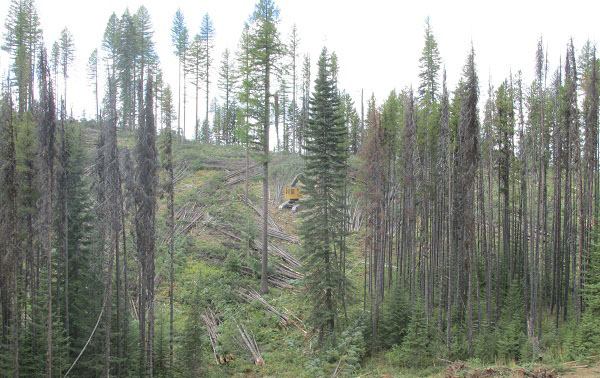
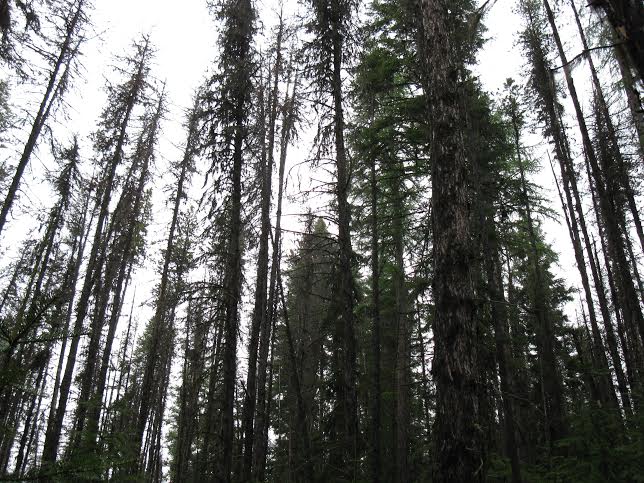


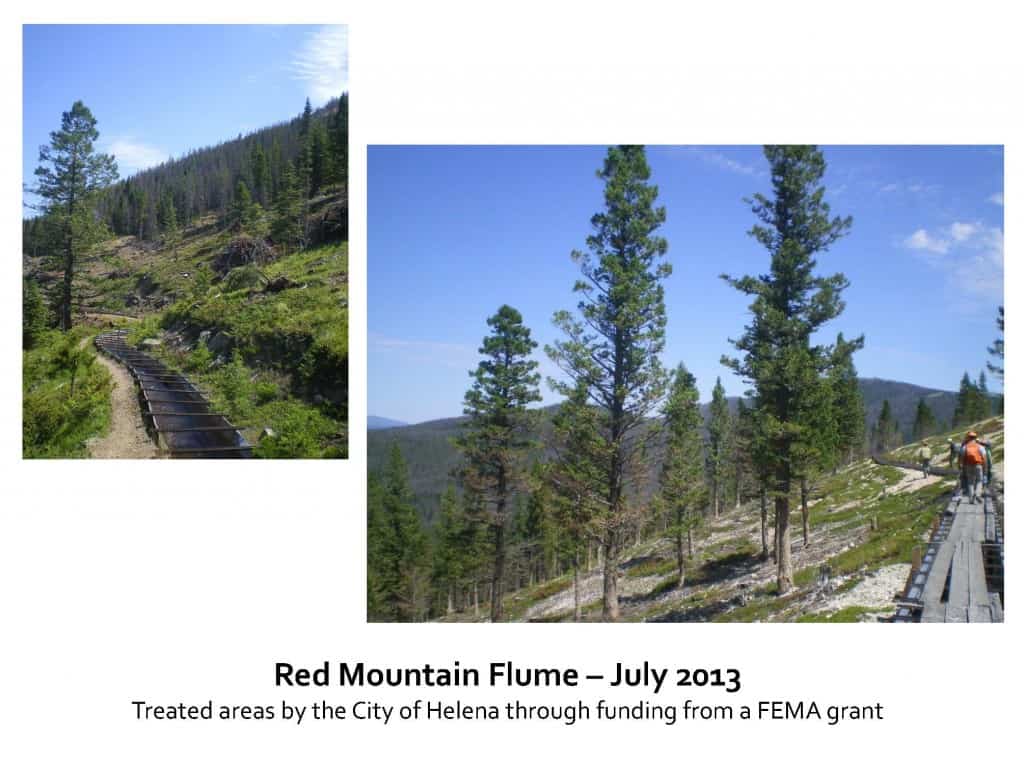
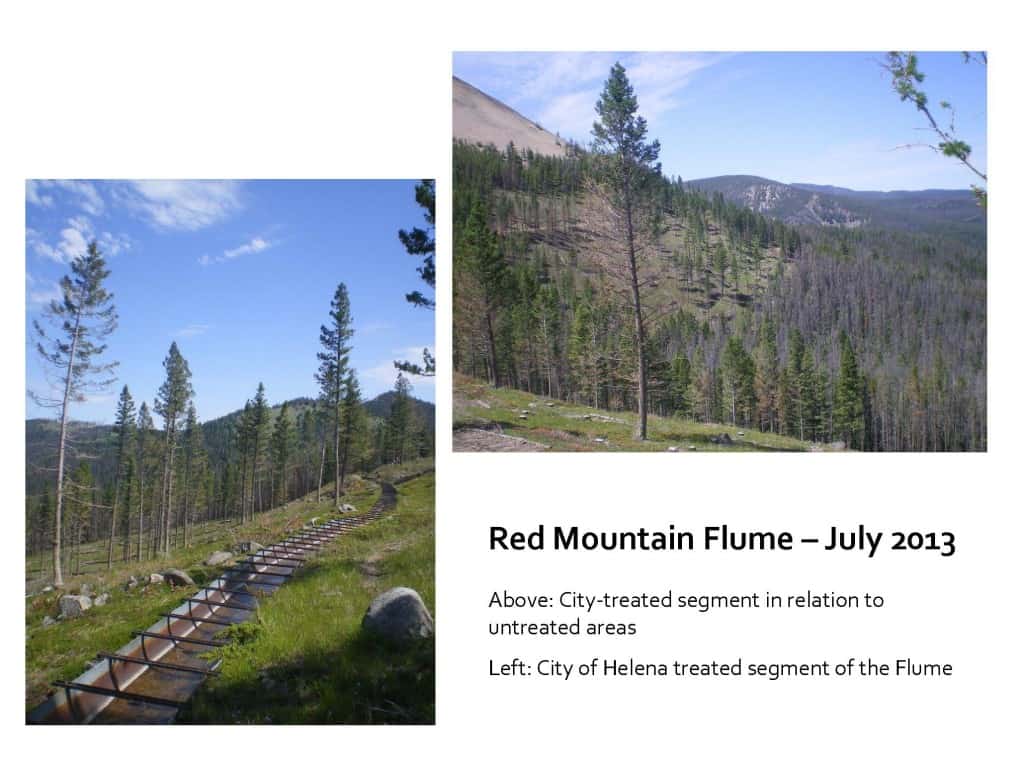
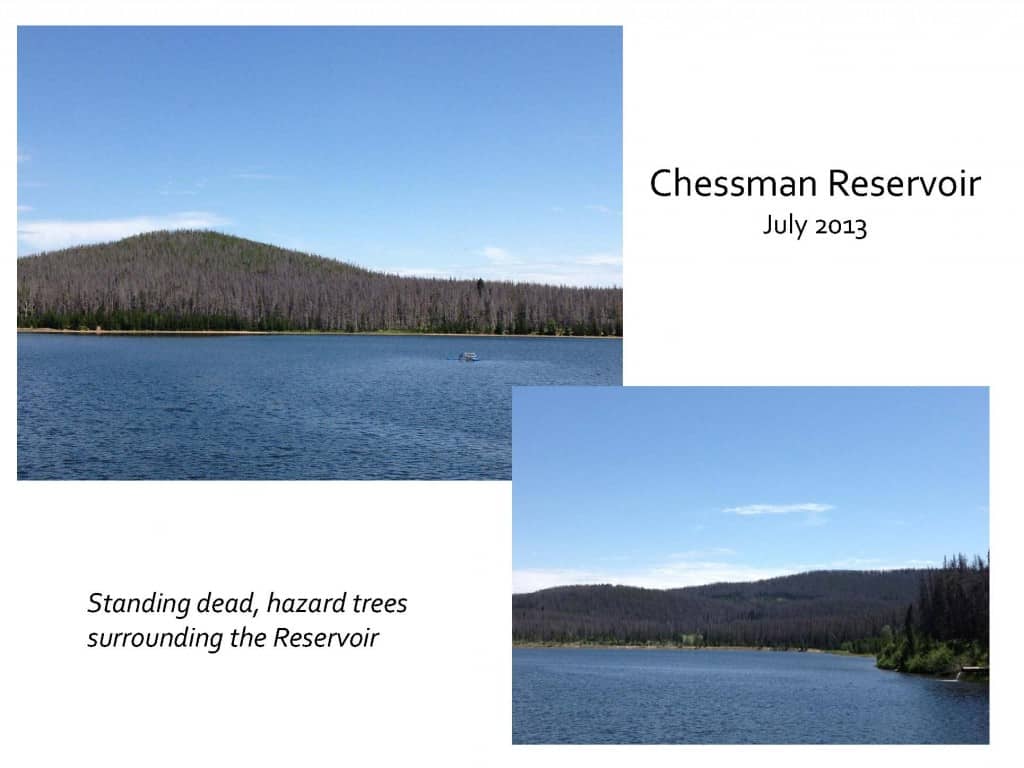
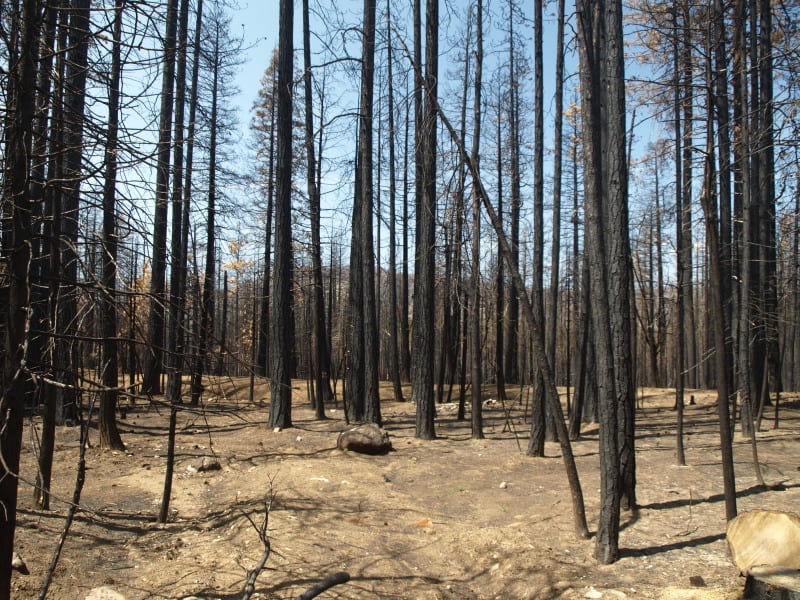

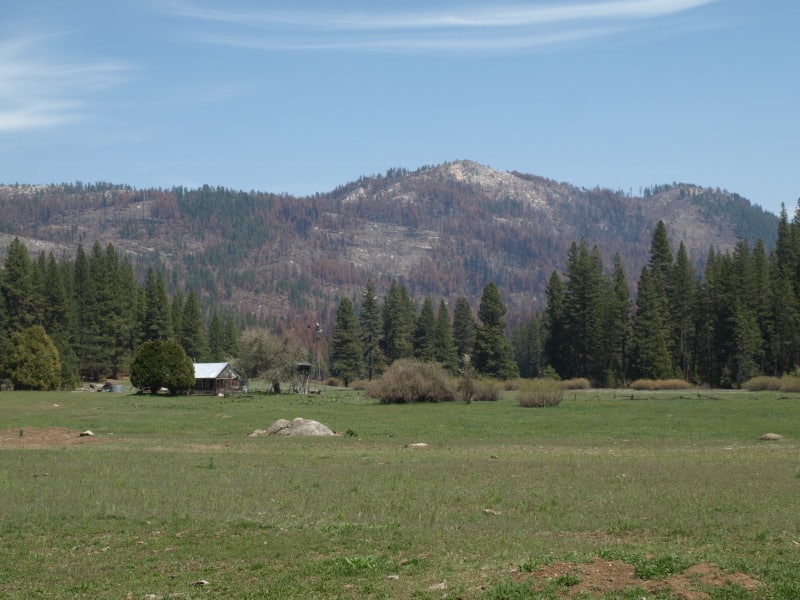
 here.
here.